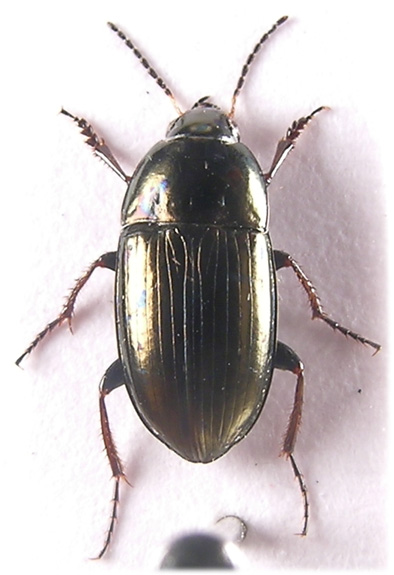
Male
It may be worth noting, as we have elsewhere, that 2007 was an odd summer; following the wet and generally overcast May and June carabids were far less obvious than usual during the summer, compared with 2005/2006 the pathways in Cassiobury park were noticably lacking, so much so that our intended quantitive recording was abandoned, but around Queens road where aenea and Notiophilus biguttatus were seen in numbers on every hot day during 2005 and 2006 no specimens were seen during 2007.
6.2-8.8mm. Black with metallic green or brassy lustre. Antennae with first three segments and base of fourth yellow or orange, third sometimes darkened apically. Eyes gently convex, protruding only slightly, with two supra-orbital setiferous puntures on inside margin. Pronotum shining although microsculpture obvious towards base (X20), strongly bordered laterally and finely so basally, often not obvious at centre. Outer basal fovea present only as a weak depression or entirely absent, inner fovea reduced to a short, sharp longitudinal streak parallel with, or deviating only slightly from, the centreline of the beetle, usually with a few coarse punctures between this and the pronotal base. Front angles protruding, sides almost parallel in basal half. Basal seta close to hind angle which is almost a right angle, without a protruding tooth. Elytral microsculpture obvious (X20), scutellar striae at least as well impressed as adjacent ones (cf. A.tibialis) although they may be of unequal length and interrupted. Without pore puncture. Interstices flat but rarely they may be weakly convex apically (M.Telfer pers.comm.). Seventh striae with two preapical punctures, usually there is another at the tip of the second stria. Epipleurs crossed. Legs dark with tibiae paler, at least basal half of meso and metatibiae. Male with three dilated protarsal segments.
¹ Another common local species, A.familiaris (Duft.), found in the same habitats, tends to be less noticeable in its behaviour and in our experience is seldom seen.
Description from 8 Watford specimens at X20
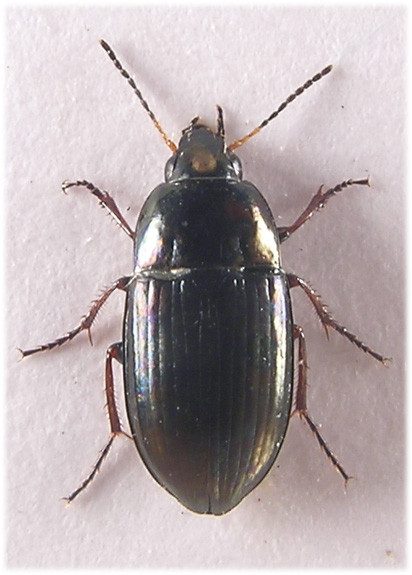
Female
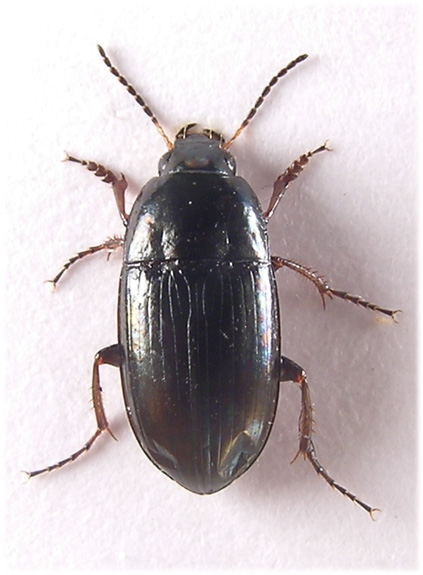
Male
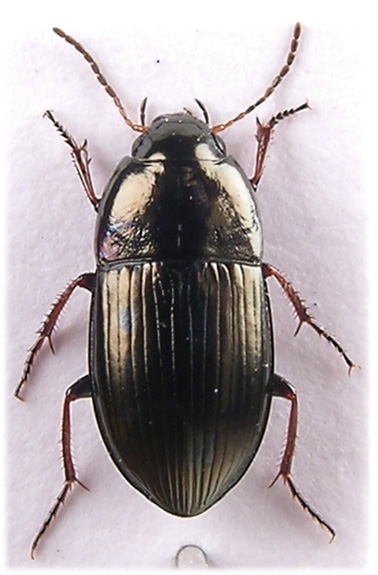
Female
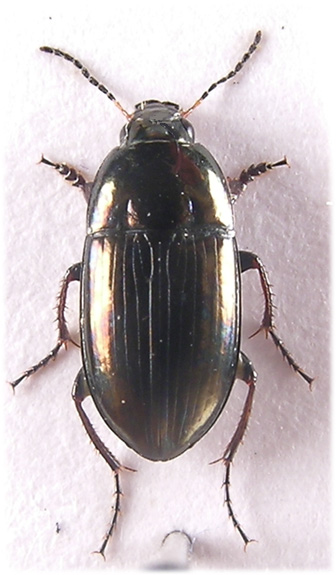
Male
Home